By Eric Niderost
British Brig. Gen. Hugh Elles walked past the Mark IV tanks of H Company, a solitary figure amid metal monsters that looked, according to one jaundiced observer, like giant toads. He stopped abruptly at tank H1, nicknamed “Hilda,” and banged its metal side with his ash walking stick, alerting the crew that he had arrived. Elles then climbed aboard, gingerly squeezing into Hilda’s open hatch. Within moments he had all but disappeared; only his head and shoulders remained in view.
Make or Break for the Tank
It was the morning of November 20, 1917, and the British Third Army was about to attack the Germans at Cambrai. But this was no ordinary battle. Its outcome would determine the fate of Elles’s newly minted Tank Corps and change the face of warfare on the Western Front and beyond. The tank was a new weapon of war, and its debut the year before was anything but auspicious. Elles knew that this was a make-or-break event, requiring a maximum effort from every officer and man in each tank.
Elles glanced at his watch, then looked straight ahead into the predawn gloom. The chalky ground was gentling rolling, culminating in a series of ridges. Here and there thick clusters of trees formed woods, their dark shapes forming opaque smears on the horizon. Pockets of mist shrouded the earth, the thin clammy tendrils adding a spectral quality to the scene. Somewhere in the distance was the Hindenburg Line, a formidable series of German trenches fronted by belts of barbed wire and defended by machine guns and artillery.
The British attack was scheduled to start at “Z hour,” 6:20 am, with the tanks slated to move out 10 minutes earlier. At 6:10, more than 400 tank engines coughed and sputtered to life. Hilda lurched forward, proudly flying the Tank Corps flag. The multicolored banner featured brown, red, and green horizontal stripes. Each color had a meaning, signifying the corps slogan: “Though the mud and blood to the green fields beyond.” A new chapter in mobile warfare was about to begin.
The British Army Bled White
The tank attack at Cambrai was an attempt to break the bloody stalemate that had evolved since the beginning of the war in 1914. In the autumn of 1917, General Sir Douglas Haig was a man in search of a victory—a search that was becoming increasingly quixotic. Initially, the British commander possessed enormous reserves of self-confidence, believing that God Himself had placed him in command. With such a divine appointment, who could doubt Great Britain’s ultimate triumph?
By late 1917, even Haig’s boundless enthusiasm was beginning to flag. The year before, the British Army had been grievously mauled at the Somme, and in the summer of 1917 Haig launched another major offensive at Passchendaele, a drive designed to advance through Flanders to a major German submarine base at Bruges. But Passchendaele, like the Somme, was an unmitigated disaster for the Allies. British, New Zealand, Australian, and Canadian forces literally bogged down in muddy shell holes filled with water from torrential rains. After months of savage fighting, the British had advanced a mere five miles, at a cost of another 400,000 casualties. Prime Minister David Lloyd George and the British cabinet were appalled. The British Army was being bled white, and Haig was doing nothing to stop the hemorrhaging.
In the meantime, the fledgling Tank Corps was in limbo, metal dinosaurs that seemed on the verge of quick extinction. Tanks were originally conceived as “landships,” able to cross barbed wire and heavy machine-gun fire with impunity. But the technology was still in its infancy and needed near-perfect conditions to succeed. Tanks were first used at the Battle of the Somme in 1916, but their debut was inauspicious. Proper tank-infantry coordination had yet to be worked out, and the heavy metal monsters had difficulty plowing through waterlogged soil that was pockmarked by shell holes. Conservative officers, wedded to the past, dismissed the tanks as abject failures. Outlined one member of the British general staff: “One, tanks are unable to negotiate bad ground; two, the ground on a battlefield will always be bad; three, therefore tanks are no good on a battlefield.”
Planning the Attack on Cambrai: From a Raid to a Full-Scale Assault
The 37-year-old Elles was a fierce defender of the tank concept, and he was not about to give up without a fair trial. In this, he was seconded by his chief of staff, Lt. Col. J.F.C. Fuller, who had prepared a plan for the future employment of tanks in a blitzkrieg-like raid in the vicinity of Cambrai, 45 miles south of Passchendaele in northern France. The ground there was firm and comparatively unscarred by war, making it perfect for a “go in, go out” style of raid that would finally demonstrate the tank’s potential.
Elles found an unexpected ally in General Sir Julian Byng, commander of the British Third Army. Byng was an early convert to the plan and enthusiastically pushed to Haig the idea of using tanks. In the aftermath of Passchendaele, Haig knew all too well that his job and reputation were on the line, and he gave the green light for the project. But the seeds of the Cambrai plan, watered by Haig’s desperation and nurtured by Byng’s enthusiasm, soon grew into something entirely different from Fuller’s more modest original conception. It was now going to be a full-scale attack instead of a raid, an attack that Haig and Byng fully expected would lead to the long-dreamed-of breakthrough that had eluded the Allies since 1914.
Cambrai was an important transportation center, the hub of a railway network, but its physical capture was only part of the plan. The principal battlefield lay between the Canal du Nord and Canal de San Quentin, inland waterways that ran roughly parallel to one another, some five to six miles apart. They would secure the flanks of the operation. The first objective was to punch a hole five miles wide into the vaunted Hindenburg Line. Once that was achieved, the next goal was to secure breakthrough points on both the right and the left. On the right, several bridges that spanned the San Quentin Canal had to be captured intact. On the left, the high ground at Bourlon Wood was another key to victory.
After the infantry and tanks achieved their objectives, British cavalry would cross the canal and sweep down Bourlon Ridge, plunging deep behind enemy lines. They would then sweep northward and take the bridges over the Sensee River, cutting off German forces south of the river. The cavalry would also create havoc behind enemy lines, allowing the Third Army to exploit the situation and advance quickly toward Valenciennes. The trickle of British cavalry would become a flood of infantry, artillery, and tanks, ever widening until the breach in the Hindenburg Line was beyond repair. The more Byng though about it, the more convinced he was of the plan’s success.
476 Tanks
The German forces manning the Cambrai sector of the Hindenburg Line were part of General Oskar von Watter’s Battle Group Caudry. There were three divisions in the line, but they were generally understrength. The German High Command was not unduly alarmed—Cambrai was considered a quiet sector, and above all they had confidence in the strength of the Hindenburg Line and the efficient killing ability of their machine gunners. The Cambrai portion consisted of three trench lines, each two to three miles apart. There were deep dugouts, resistance centers laid out in checkerboard fashion, and belts of barbed wire 50 yards thick.
There were serious flaws in the British plan. The six corps assigned to the Cambrai offensive, codenamed Operation GY, were fresh from the Passchendaele fiasco. They had been mauled, and they were exhausted. Worse still, few reserves were available. The Tank Corps was going to throw every man and machine into the fight. There would be 378 fighting tanks going forward, crushing barbed wire, crossing trenches, and hopefully silencing German resistance. After the tanks had flattened the barbed wire, the resulting tangled “mat” was considered suitable for infantry to cross, but not horses. To solve that problem, 32 support tanks were fitted with towing gear and grapnels. The grapnels would hook the flattened wire, pull it aside, and gather it into prickly balls, making a clear path for cavalry horses’ hooves. Other support tanks were fitted to carry supplies, bridging materials, telephone cables, and wireless apparatus. Altogether, 476 tanks were going to take part in the battle.
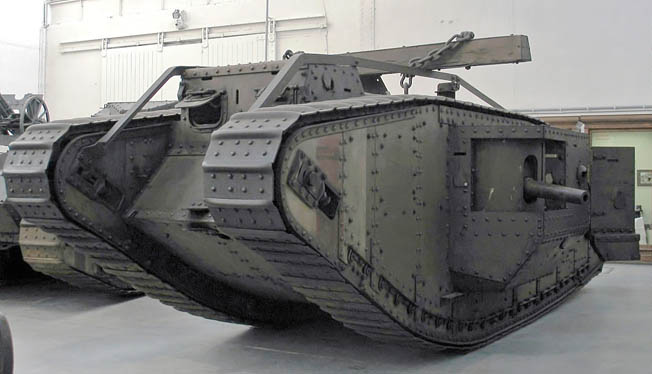
Firing “straight from the map”
As Z hour approached, both tank crews and the infantry behind them felt a growing excitement, a heady mixture of elation, adrenaline, and understandable fear. “Like all the rest I was excited at the prospect of going into battle behind these new-fangled, Wellsian monsters,” Corporal George Coppard recalled. “I felt they were really going to exact retribution, on behalf of all of us, for the countless miseries and privations that we poor blighters had suffered at Jerry’s hands. This was to be the reckoning.”
The Germans, for their part, had nothing but contempt for tanks, but as an insurance policy they had widened many trenches to 13 or 14 feet across. In theory, it would make the trenches too wide for a tank to cross. But the British had foreseen the problem and come up with a brilliant “medieval” solution—fascines. These were bundles of brushwood bound together with chains, making one huge mass 11 feet in diameter, 10 feet wide, and weighing around a ton. The 51st Chinese Labor Company worked day and night to make enough fascines in time for the big attack. Each fascine would be mounted on the tank’s nose. When a tank approached the edge of a trench, the fascine would be jettisoned into the gap, allowing the machine to cross with relative ease.
Surprise was going to be the key to the operation, which meant that there could be no ranging shots for the artillery. By the same token, there would be no artillery barrages to warn the enemy where the attack was going to take place. British gunners had learned to fire accurately “straight from the map,” precalibrating their guns for action. If artillery was brought up at night and hidden from observation, surprise could still be achieved.
The British assault forces, right to left, were the 12th (Eastern), 20th (Light), 6th, 51st (Highland), 82nd (West Riding), and 36th (Ulster). The 29th Division was held for support. Fuller had worked out precise plans for infantry-tank cooperation, plans that would be put to the test in the coming fight. The tanks would lead the way, crushing the wire and clearing the German trenches. Khaki-clad Tommies would follow close behind in “worms,” or columns, not long lines as was customary.
The Cambrai attack would also get crucial air support from no fewer than 14 British squadrons. Some 275 Sopwith Camels, Scouts, Bristol Fighters, DH4s, and DH5s would lend a hand by bombing and strafing German positions. Ironically, the German air force was grounded due to heavy ground fog and poor visibility. The Royal Flying Corps compensated by hugging the ground, flying so low that they were able to shout encouragement to the British infantry as they buzzed past.
Surrender and Retreat
At precisely 6:20 am, more than 1,000 British guns opened fire, the thunderous reports shattering the morning calm. Hundreds of shells rained down on the German trench lines, gouging great craters into the earth, tearing, dismembering, and pulverizing human flesh with horrifying ease. Tank crews in the front line had front-row seats to the mesmerizing spectacle. “The whole of the enemy’s lines were lit up,” one tanker remembered, “in a tossing, bubbling torrent of multi-colored flames. And, best of all, nothing came back in reply. It seemed almost too good to be true, this steady rumbling forward over marvelous going. No craters in the ground, no shelling from the enemy, and our infantry following steadily behind.”
The tanks started to advance, great rhomboidal tortoises clanking through the grassy chalk soil at about two to three miles an hour. Their advance was slow but seemingly inexorable. The belts of barbed wire were easily crushed beneath the lumbering 28-ton bellies of the Mark IV tanks. Meanwhile, dazed German soldiers, their senses reeling from the preliminary bombardment, hoped for a respite when the barrage lifted. Half-deafened from shell bursts, they peered into the early-morning gloom and beheld an awesome spectacle: Hundreds of dark shapes probed through the tendrils of mist, an iron tide that refused to ebb.
For many German veterans, it was too much to bear. Soldiers either fled in terror or surrendered in droves. Ventilation was poor in the tanks, and even in the early going the crews already were sweating in temperatures that reached 120 degrees. But these perspiring warriors were filled with a growing elation. Tank commander Captain D.G. Browne reported: “The German outposts, dazed or annihilated by the sudden deluge of shells, were overrun in an instant. Down the whole line tanks were dipping and rearing up and clawing their way across into the almost unravaged country beyond. The defenders of the line were running panic-stricken, casting away arms and equipment.”
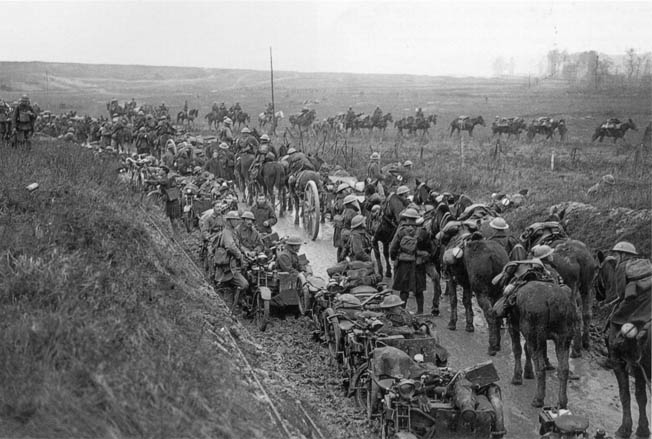
Taking the Bridges
Elles had led his men forward in Hilda, but after crossing the main German trenches and sharing the risks with his frontline tank crews, he was needed back at the command center in the rear. He got out of Hilda, casually lit his pipe, and walked back to Tank Corps headquarters to direct operations. Ironically, Hilda later ditched. Elles sent a congratulatory telegram to Colonel Ernest Swinton, creator of the Tank Corps, back in London: “All ranks thank you. Your show. Elles.”
On the right, the 12th Division was making good progress, taking La Vacquerie and pushing on to Masnieres. There was a road bridge over the San Quentin Canal at Masnieres, and it had to be captured intact if the British were going to establish a bridgehead on the far side. Precise plans were jettisoned as different units began a mad scramble to secure the various canal bridges. Major Philip Hammond, commander of an F Battalion scratch force, set out on foot to make sure the Masnieres canal bridge was not destroyed. British infantry reached Masnieres about noon. Most of the Germans had fled, but gray-clad snipers infested the buildings, making life difficult for the tanks and supporting infantry as they swarmed through the town.
The Masnieres bridge had been partly damaged by German engineers, but the temptation to cross was just too great. A tank named “Flying Fox II” decided to try its luck. The weakened steel buckled under the tank’s 28-ton weight, unceremoniously dumping the sluggish leviathan into the canal water with a great gout of steam. The eight-man crew escaped successfully, but in the process the commander lost his toupee. He later applied for—and received—compensation for the lost hairpiece.
The British had more luck at Marcoing, a mile away from Masnieres. Some 20 tanks from A and B Battalions, accompanied by 29th Division infantry, captured the railway bridge intact. About half a mile east of the failed Masnieres bridge, the 2nd Battalion of Hampshire Regiment found a lock bridge that was undamaged, along with a wooden footbridge to the west. The Hampshires joined other regiments to form a toehold on the canal’s opposite side, but the situation was still precarious.
The next step was for the cavalry to gallop across and spearhead a breakthrough. This never happened, for a variety of reasons. The 5th Cavalry Division was ensconced at Finis, far behind the British lines. There was a breakdown in communications, and it took hours for word of the day’s success to reach the horse soldiers. Finally, the cavalry moved forward, but it wasn’t until 3 pm that they started to arrive at the front in large numbers. By then, the daylight was fast fading, few bridges were in British hands, and the horsemen could not go across en masse.
B Squadron, Fort Garry Horse, managed to cross the lock bridge, but it took half an hour to funnel 150 mounts through the narrow span. When the squadron commander was killed, leadership fell to Lieutenant Marcus Strachen. For a few hours, members of B Squadron could indulge themselves, riding about in a traditional manner that harkened back to Balaclava and Waterloo. They attacked a German battery, Strachen personally sabering seven Germans. But finally the realities of modern war caught up with the dream of dashing cavaliers mounted on swift steeds. When Strachen finally made it back to British lines, only 23 men were still with him—all of them without horses. The lieutenant received a Victoria Cross for his exploits.
Destroying Mark IV Tanks
The 51st Highland Division ran into trouble at Flesquieres, in the center-left area of the battlefield. The division’s commander, Maj. Gen. George M. Harper, didn’t like tanks, feeling that they attracted too much enemy fire. He had his Highlanders advance by section in extended order, not in platoons by file, as called for in Fuller’s detailed plan for tank-infantry support. The Black Watch, Seaforth, Gordon, and Argyll and Sutherland Highlanders were strung out 200 yards or more behind the leading tanks. When tanks from D and E Battalions reached the crest of Flesquieres Ridge, they were surprised by German batteries ensconced on the reverse slope.
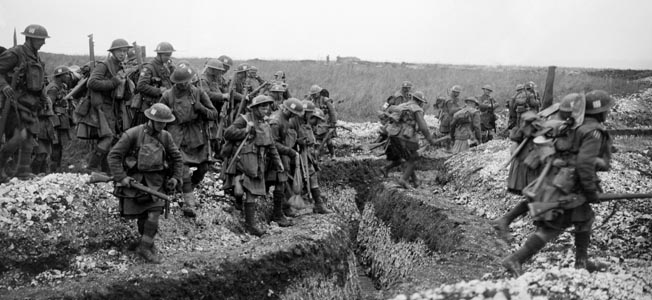
The Mark IV tanks had armor that was proof against ordinary bullets, but vulnerable to artillery. One after another, tanks exploded as shells ripped into their iron skins. Crews not able to escape were burned alive, immolated when their machines became great funeral pyres. German musketeer Walter Neumann of the 27th Reserve Regiment took part in one attack on the tanks. “While we quickly packed up our belongings,” he reported, “we could hear rifle bullets whistling in the streets. As we emerged from the house a tank drove by us. With five men I sneaked behind the machine and pushed a few grenades through the tank’s apertures. An inferno erupted inside, finishing off the crew.”
Some tanks had lucky escapes. At one point a German shell punched through a tank, decapitating the driver, whose head fell on the lap of the officer seated beside him. The same shell killed two gunners on the right sponson before exiting out the rear. Since the missile didn’t explode, the rest of the crewmen survived.
The Highland infantry found Flesquieres rough going. Major Erich Krebs of the 27th Reserve Infantry Regiment and around 600 other Germans fought with great courage against the odds. The Highlanders had to fight for every house, building, and street of the tiny village. The Highland Division’s advance was effectively stalled, creating a kind of domino effect on the neighboring 62nd Division. Its commander, Maj. Gen. W.P. Braithwaite, was making good progress but felt compelled to halt because he didn’t want his right flank up in the air and exposed.
A Day of Success for the Tank Corps
Night fell and the battle ended, at least for the moment. It was a time to take stock. In spite of the setback at Flesquieres, the British had succeeded beyond their wildest hopes. The Tank Corps had been vindicated, with gains that even the most stubborn conservative such as Harper was bound to acknowledge. A large section of the Hindenburg Line had been breached, a gaping hole some six miles wide and two miles deep. The Tank Corps and supporting infantry had made great gains in only one day, and at the cost of 4,000 casualties. (At Passchendaele, by contrast, a similar advance had taken three months and cost some 400,000 casualties.) In addition, the Cambrai operation had bagged more than 7,000 German prisoners and 100 guns.
The news of the first day was received in London with a mixture of relief and joy. Bells pealed in celebration throughout Great Britain. Unfortunately, the rejoicing was premature.
November 21 dawned cloudy and cold, with a drenching rain that dampened both bodies and spirits. Major Krebs and his men had withdrawn from Flesquieres, and the village fell easily, but more heavy fighting was to come. The Highlanders set out for Cantaing and Fontaine-Notre Dame, three miles to the northeast, where fresh German units such as those of the 107th Division were waiting for them. Meanwhile, as one British tanker admitted, “We were all fagged out.”
Taking Cantaing
From this point on, the lack of reserves would influence the course of the battle. At the end of the first day, the Tank Corps had gone above and beyond the call of duty. Of the 378 fighting machines, 179 had been removed from further action—65 by direct hits, 71 by mechanical failure, and 43 ditched. Above all, the remaining tank crews were bone weary, and there were no reserves to replace them
Withering machine-gun fire tore through the kilted ranks at Cantaing, causing the stubbornly courageous Scots to waver. Then, at the last moment, the Highlanders cheered as they spotted 13 tanks of B Battalion rattling into view. The tanks help secure Cantaing, although the fighting was bloody and hand-to-hand—bayonets, rifle butts, fists, and teeth. German Corporal Karl Feldweg, taking a page from his comrade Walter Neumann’s book, personally knocked out two British tanks. “I grabbed several hand grenades, tied them together and worked my way up to one of the tanks, shoving the bundle into a hole,” Feldweg recalled. “A mighty explosion occurred inside and the stricken machine stopped, spewing thick, black smoke.” He ran to a second tank, and threw a grenade bundle underneath it as well. “A moment or two after the detonation the tank’s entire crew climbed out and was taken prisoner,” said Feldweg. “I sent these Englishmen to the rear under a two-man guard, but soon more tanks arrived and we were forced to leave the village.”
“What Can be Taken Once, Can be Taken Again”
With Cantaing captured, the Highlanders and tanks moved on to Fontaine. Eight H Battalion tanks led the way through a gauntlet of German fire. Captain D.E Hickey, a 22-year-old tank commander, recalled: “Shells were bursting all around us, and fragments were striking the sides of my tank. While the four gunners blazed away, the rest of my perspiring crew kept the tank zig-zaging to upset the enemy’s aim.” The eight tanks made it into Fontaine, and to their great surprise the village was unoccupied by German forces. Cambrai was only two miles away. Elements of the 51st Highland Division arrived 30 minutes later. The tanks, running low on gas and ammunition, were ordered to withdraw, leaving a few hundred Seaforth Highlanders to hold the newly won prize.
Unsurprisingly, General Harper refused to send more reinforcements to Fontaine to secure the position. Instead, the hidebound officer ordered a halt to all further advances. Fontaine seemed to be of little importance to him. Harper declared that “what can be taken once, can be taken again.” As if to prove him right, within 24 hours the Germans counterattacked Fontaine in force. Signals from the Seaforths asking for help were ignored. The Highlanders refused to yield, fighting to the death after ammunition was gone. But in the end, they were overwhelmed. Fontaine shifted into German hands.
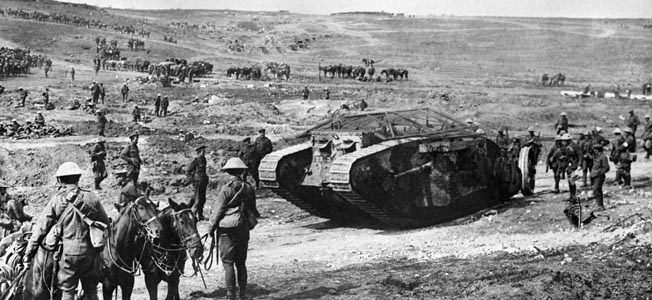
In the meantime, Haig decided to continue operations at Cambrai, although he suspended efforts to cross the canals on the right in favor of a combined thrust toward Bourlon Wood. It took at least a day to prepare for the change, and, in the meantime, the Germans grew stronger by the minute. For the next five days, from November 23 to November 27, the British bludgeoned their way into the Bourlon Wood, a dense forest of some 600 acres. Artillery shells soon destroyed much of the forest, leaving only skeletal, shredded trunks that poked forlornly into the sodden sky. Bourlon became a soldiers’ fight, with little cohesion or command. Machine guns chattered, wounded screamed, and tanks rumbled and clanked through the corpse-strewn wreckage.
A Surprising Counterattack
While the British made slow but steady progress, the Germans were preparing a counteroffensive. General Erich von Ludendorff, Bavaria’s Crown Prince Rupprecht (German Army Group North), and General Johannes von der Marwitz (Second Army) met in conference at Le Cateau, where Ludendorff proposed nipping off the growing British salient with attacks southward from Bourlon and westward from Honnecourt. “Never before has there been such an opportunity” for a counterstroke, he exulted. He intended a short, devastating bombardment, followed by a two-corps infantry assault behind gas and heavy explosives.
The Germans began their counteroffensive on November 30. General Byng and other British officers later denied that they were surprised by the German thrust, but the evidence shows otherwise. The German left-wing advance was a great success, initially making gains as impressive as the British gains 10 days earlier. The German air force also had wrested control of the skies from the Royal Flying Corps and droned overhead, strafing and bombing the British lines. “The German aeroplanes were very active, flying over our lines in large numbers, very low,” Captain George Dugdale of the 6th Somerset Light Infantry wrote. “They were shooting with machine guns at the troops on the ground, and I am quite sure this did more to demoralize our men than anything else.”
By 10:30 am, an eight-mile section of the British front had caved in. Thousands of British soldiers were captured, though most fought bravely until finally they were overwhelmed. The British were teetering on the edge of disaster, when the German southward advance was stopped cold. With this part of the German drive stalled and the line stabilized, Byng could focus attention on the far more serious assault coming from the west.
The 1st Guards Division, along with dismounted British cavalry and 36 battered tanks, managed to plug the gap at Gouzeaucourt, recapturing some British guns and ammunition that had been lost earlier. A number of German prisoners were taken as well. The clash at Gouzeaucourt didn’t stop the German drive by itself, but it was a symptom of an overall trend. Their offensive, too, was sputtering out.
“An Offensive Victory on the Western Front”
Fighting continued for three more days, but by December 7, it was all over. The weather was turning bad, and snow was beginning to fall. Losses and gains on both sides had more or less canceled each other out. The British had lost some 44,000 men, the Germans 50,000. Ludendorff, with typical German bravado, claimed “an offensive victory on the Western Front,” although he was forced to admit that the counterattack had not accomplished all he intended. Crown Prince Rupprecht put it into proper perspective: “At any rate, we have given the British a hard blow,” he said.
On the British side, recriminations and finger-pointing began at once. The November 30 surprise attack by the Germans was particularly galling. Byng, who normally expressed great confidence in his men, was highly critical of his junior officers and NCOs. Tank Corps creator Ernest Swinton was closer to the truth when he observed dryly: “I bet that GHQ are just as much surprised by our success as the Germans.”
In the end, the lack of reserves was the most significant factor in the British failure at Cambrai. Encouraged by Elles’s leadership, the Tank Corps had given its all on the first day. By the second day, tank crews were exhausted. Tanks were knocked out, broke down or ditched, but the battered survivors and their exhausted crews had to continue to fight. There was no other choice. The lack of infantry reserves was also a factor. To maintain the momentum of a major offensive, a steady supply of fresh troops is usually needed. They were simply not available, so exhausted infantry, like the tank crews, had to keep fighting. As Fuller noted, “The battle came to a halt because there was not a single tank or a single infantry unit in reserve.”
While technically a disappointment, Cambrai nevertheless had demonstrated what the tank—even a primitive machine in its developmental infancy—could do. The Tank Corps had won its stripes and would go on making significant contributions for the remainder of the war. Today’s Royal Tank Corps still celebrates November 20 with justifiable pride.
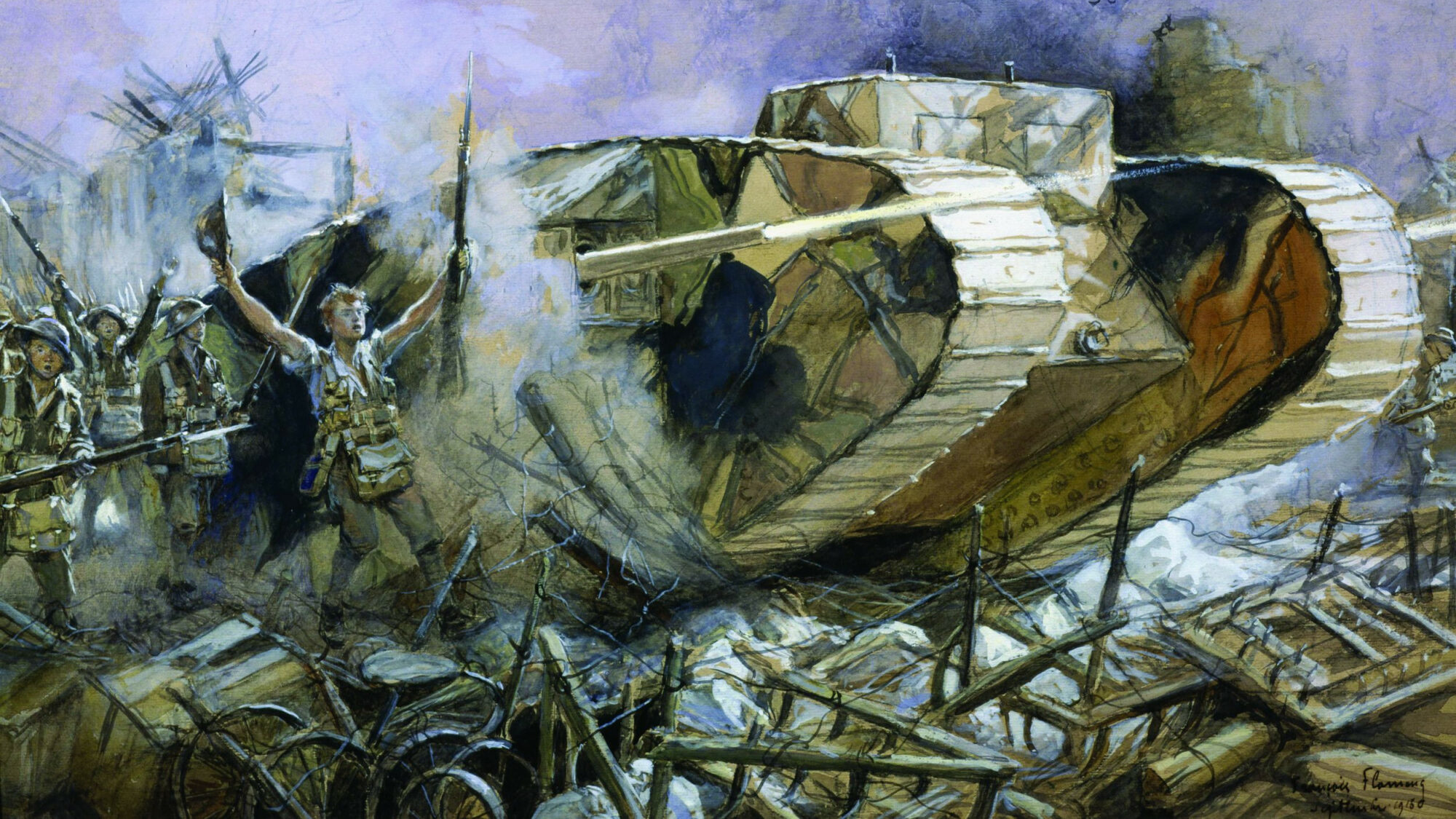
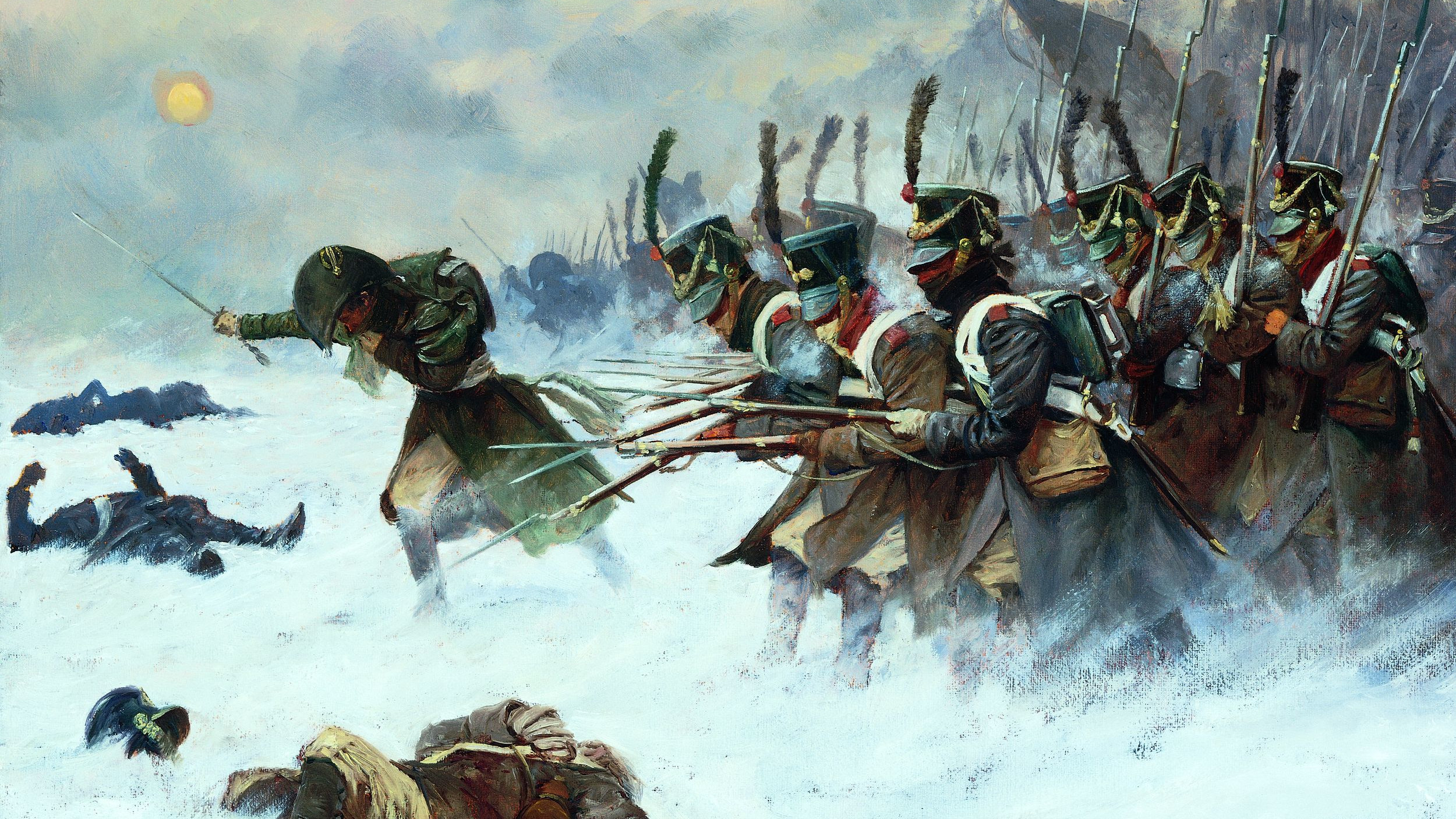
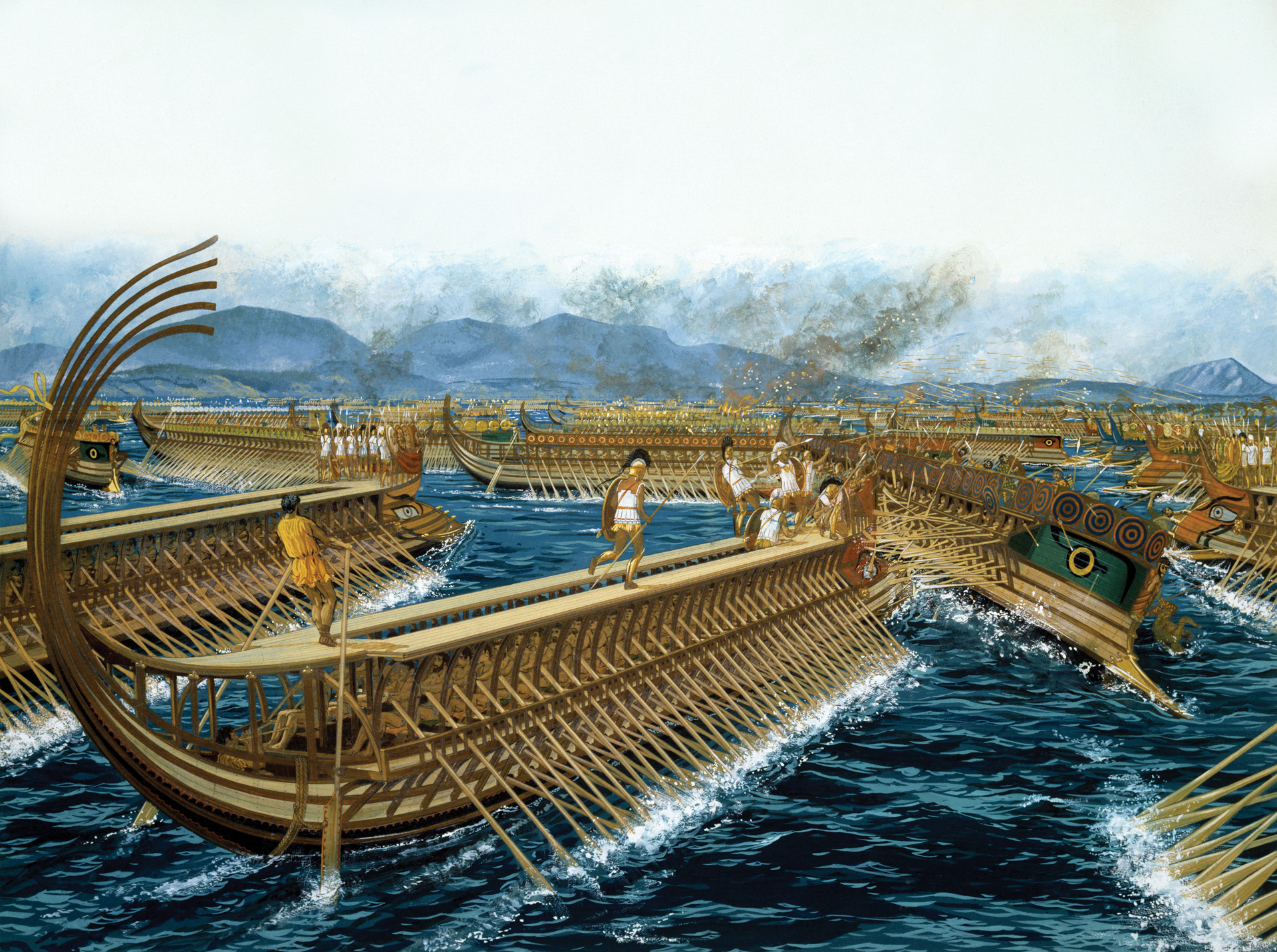
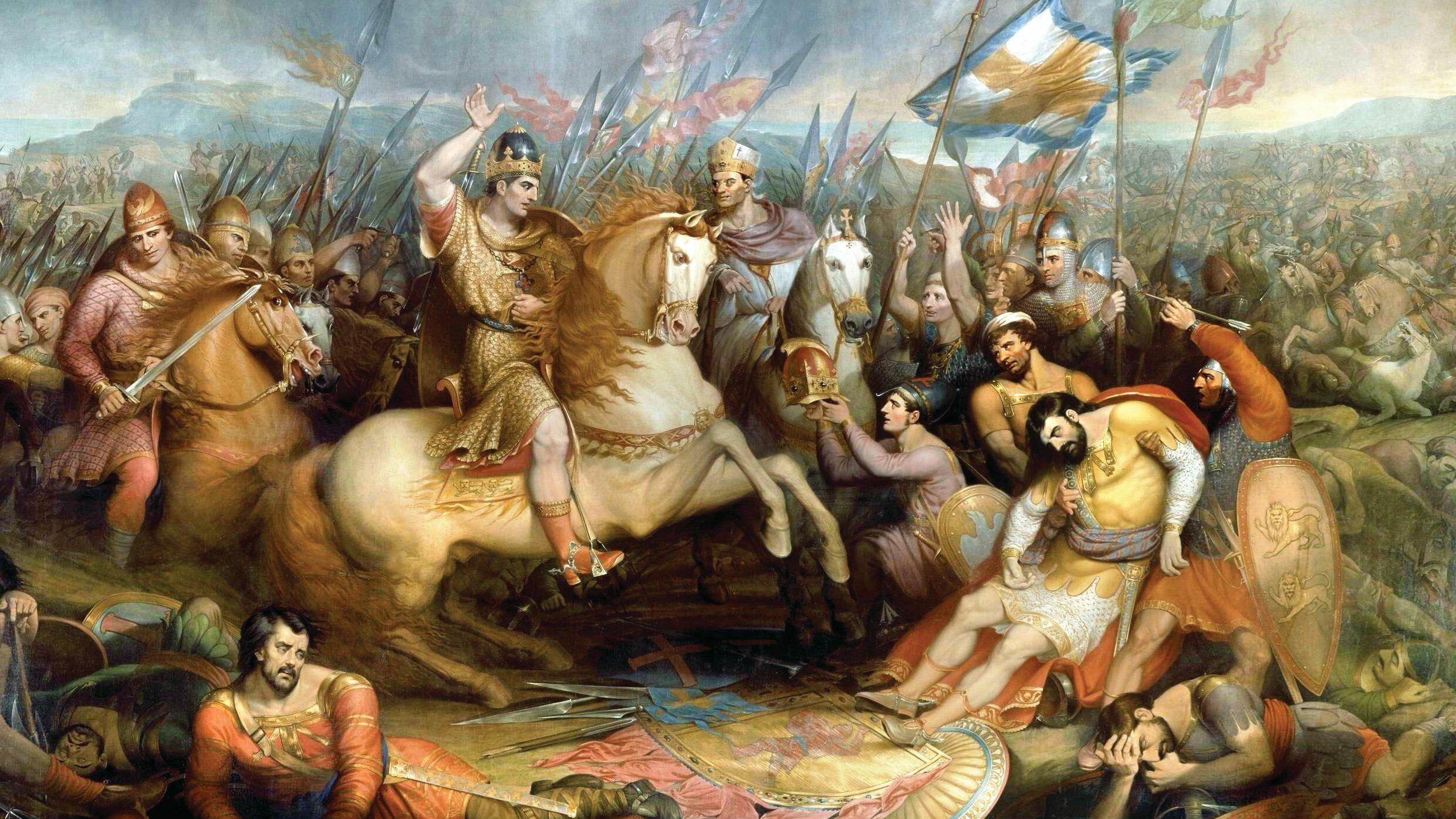
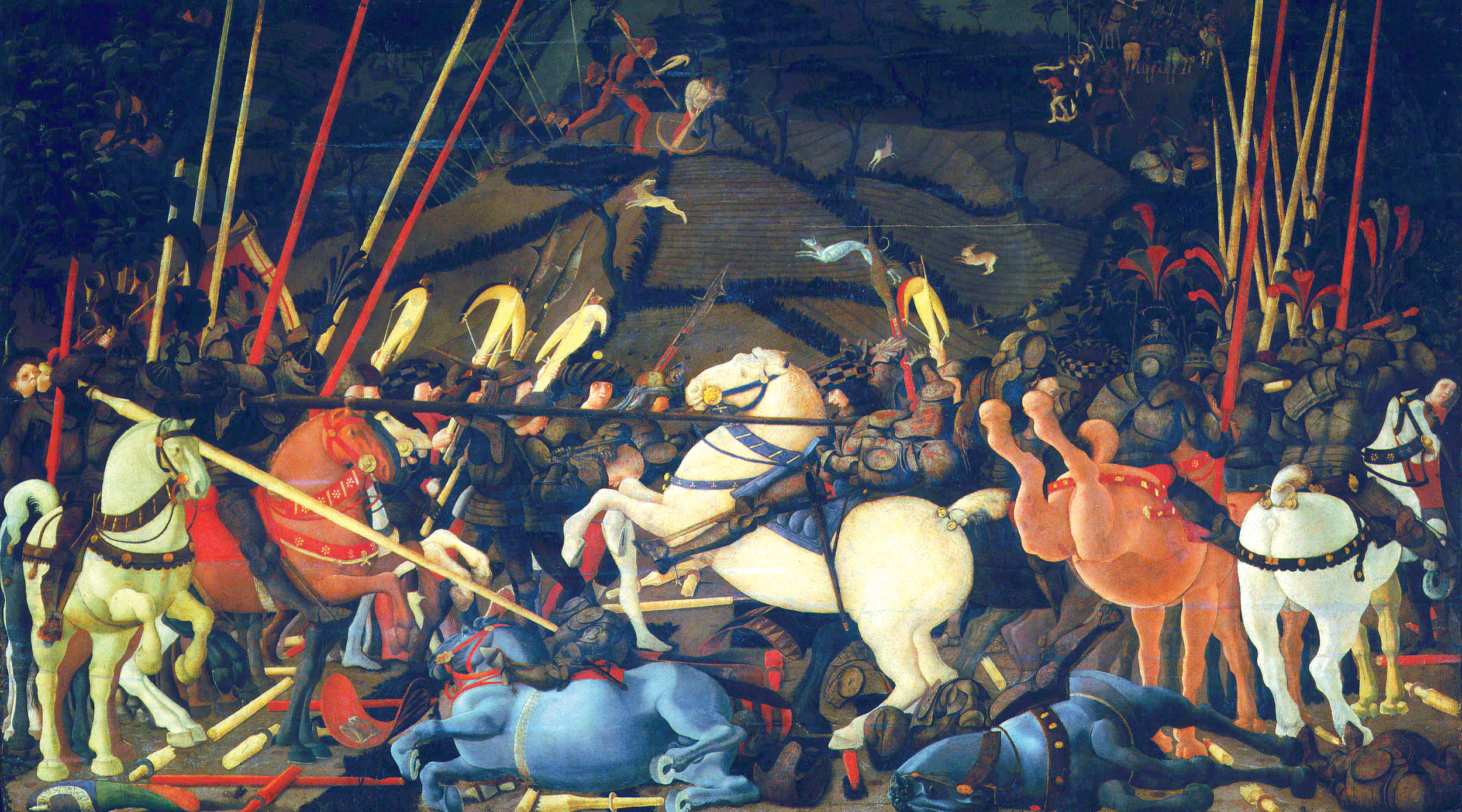
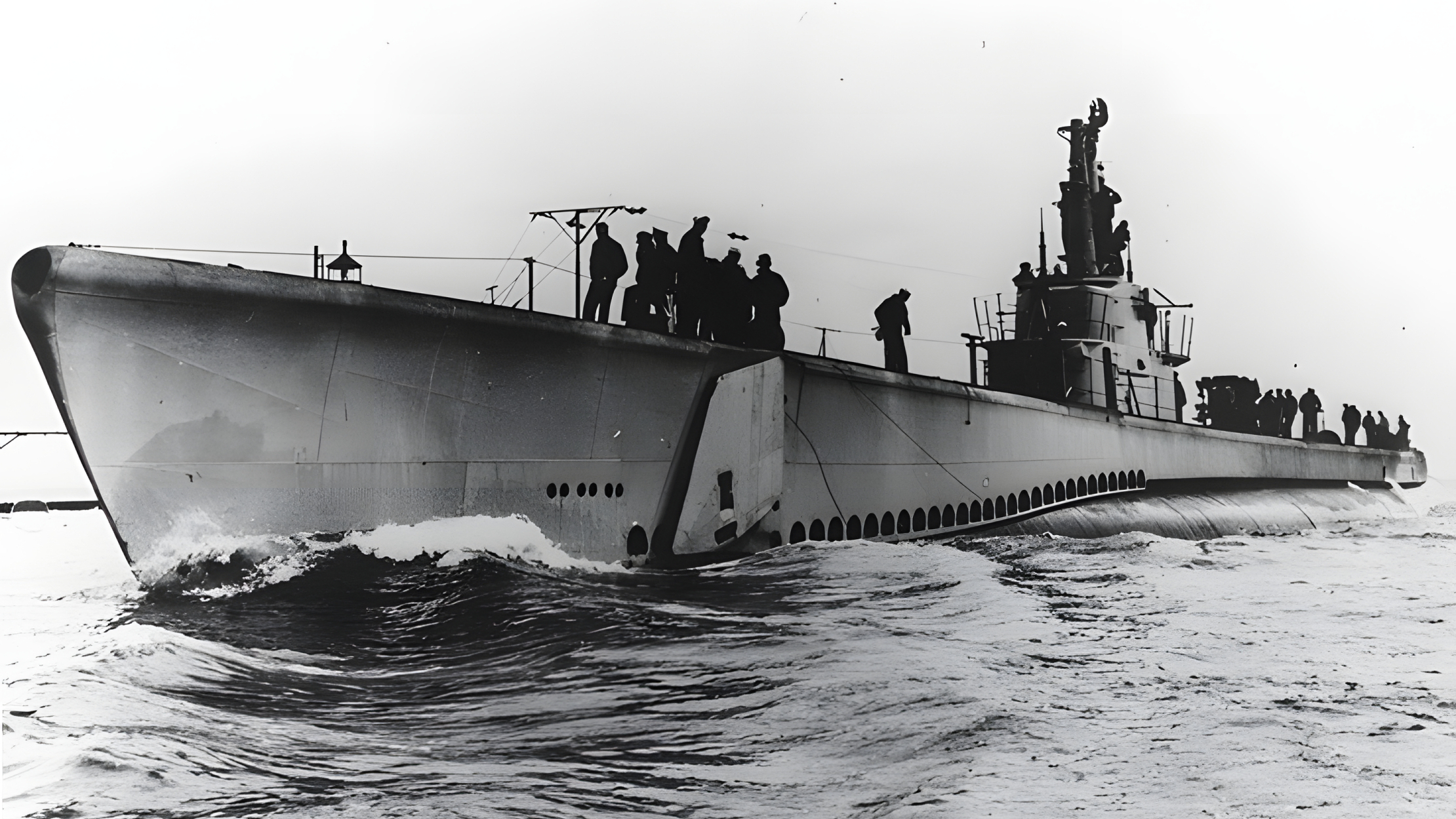
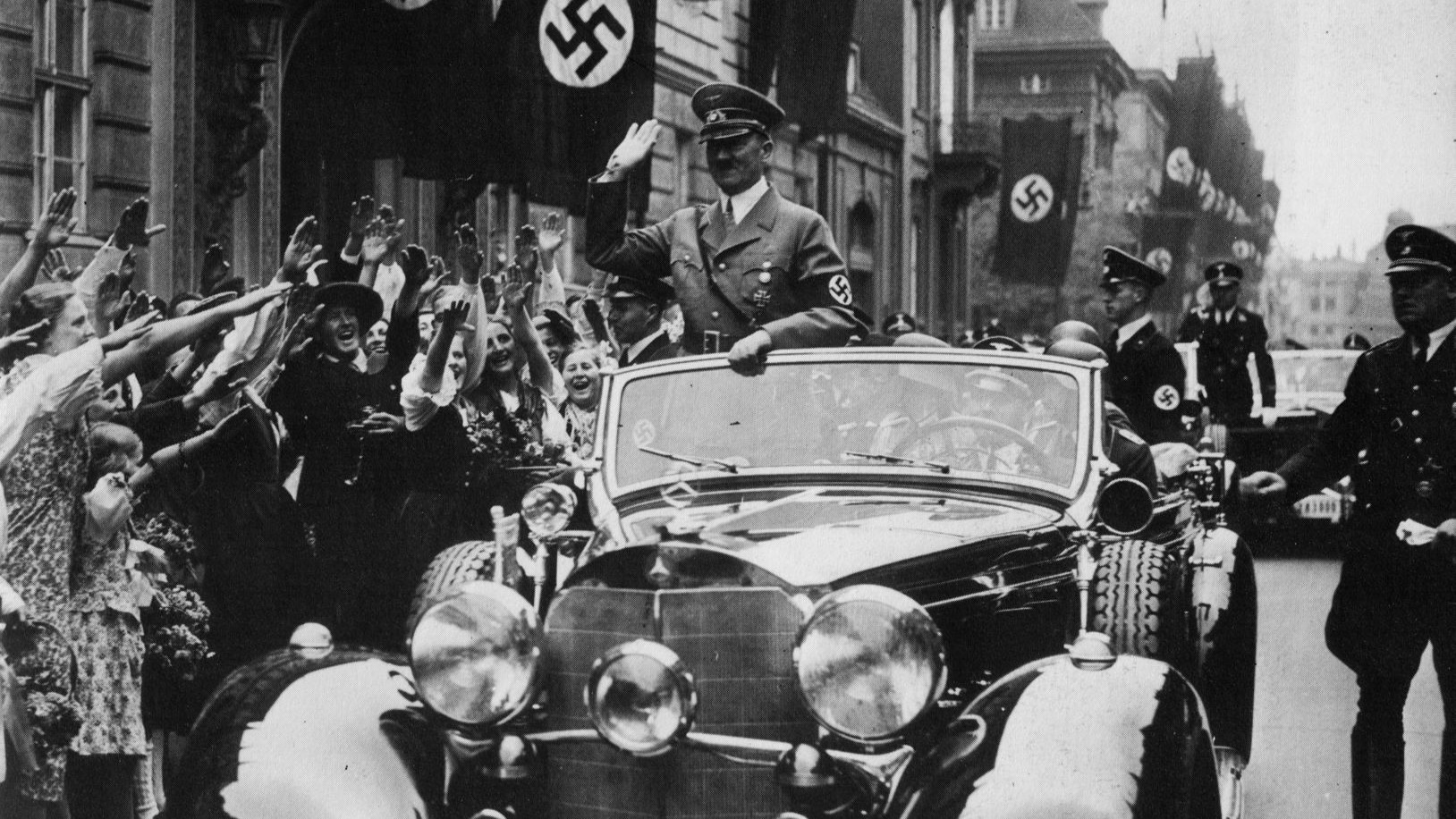
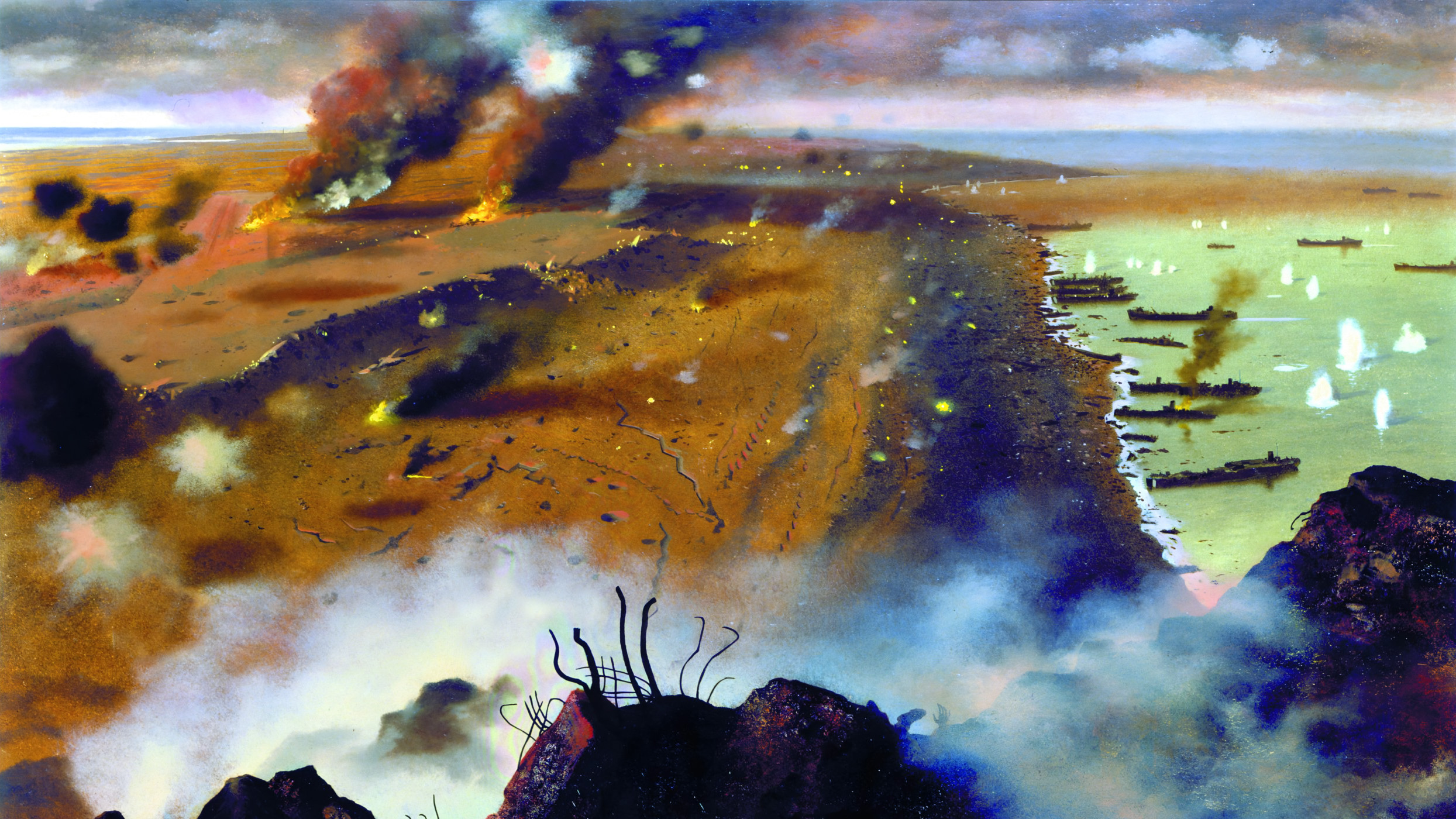
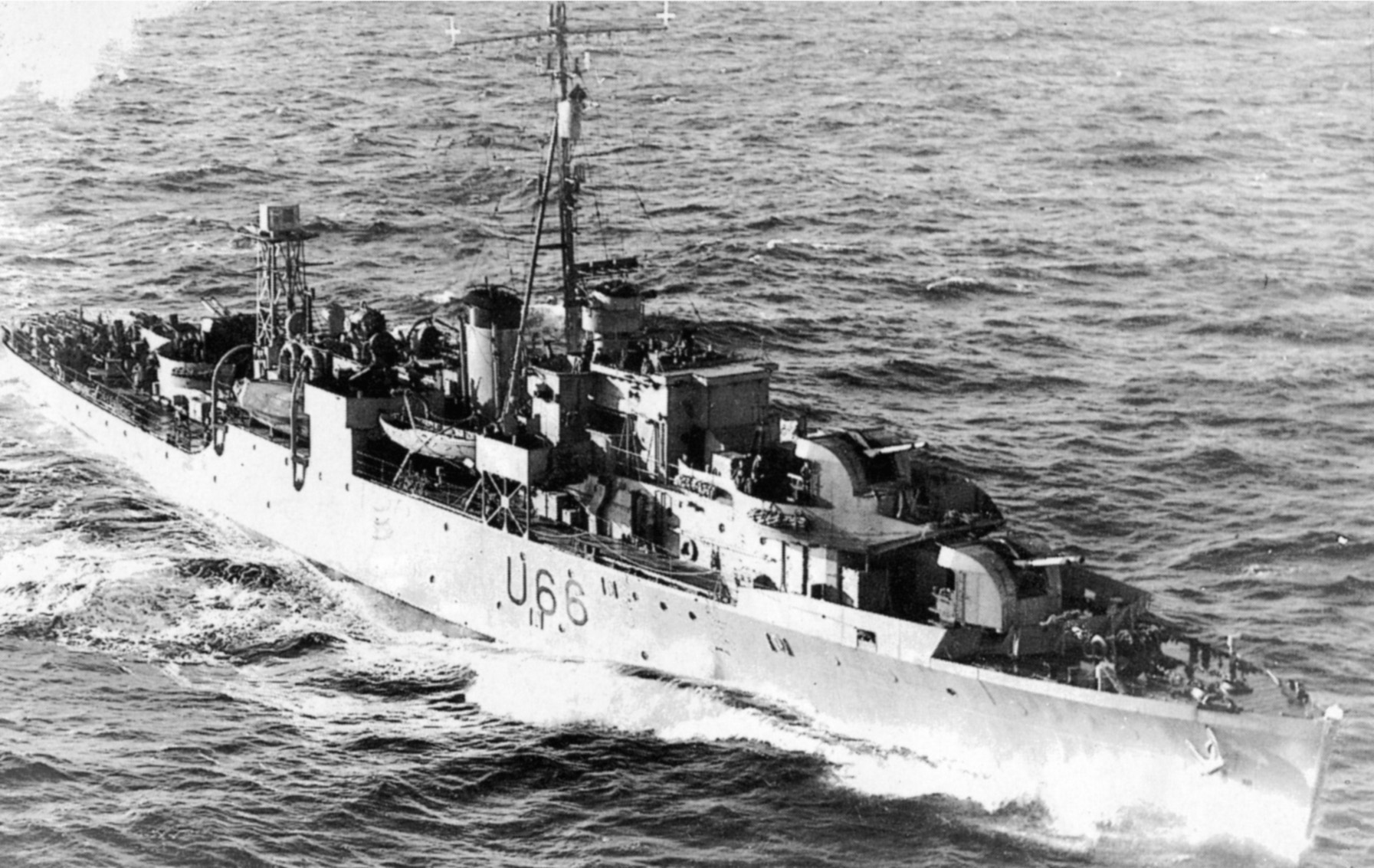
Join The Conversation
Comments
View All Comments